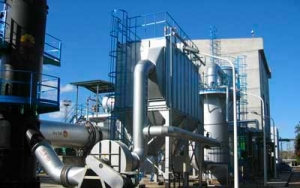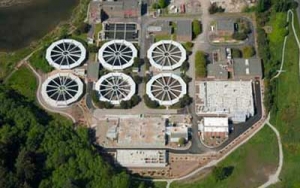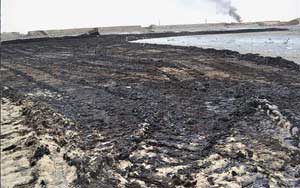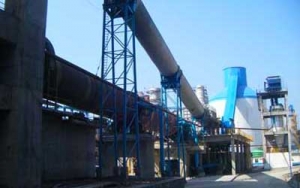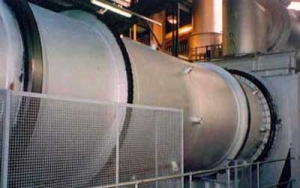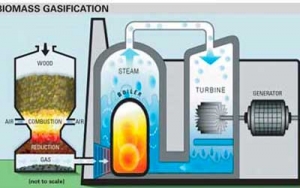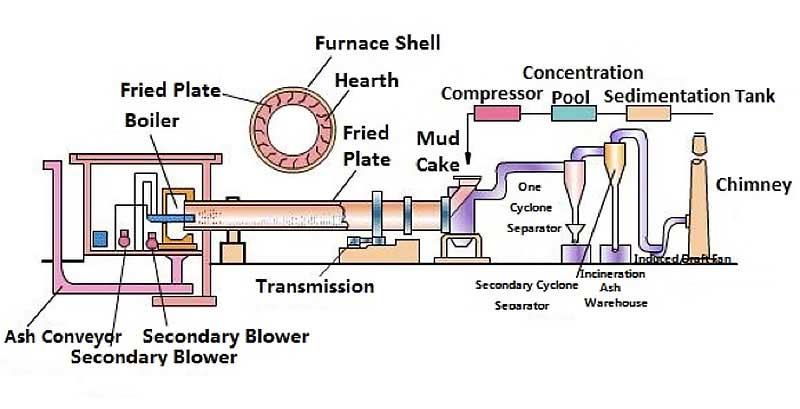The Application of Rotary Kiln
Waste incineration
Incineration of rotary kiln is an ideal choice for waste containing a variety of difficult to burn substances, or wastes with large changes in moisture.
Sewage sludge treatment
It is applied to high temperature gasification and heats the sludge. The maximum working temperature of the furnace can reach 700 °C.
Contaminated soil treatment
Soil contamination can result in soil and land pollution, and affect the health of plants that depend on them.
Cement production line
It is mainly used for calcining cement clinker, first-class cement rotary kiln development and design, with testing and testing methods.
Oil sludge treatment
Floor sludge, tank bottom sludge, drilling mud slurry, treated sludge oil content less than 2%, to meet environmental requirements.
Biomass gasification
Convert biomass into flammable gas, and use flammable gas to drive gas-fired power plants to generate electricity.
Rotary kiln structure
Kiln head section
The kiln head is the discharge part of the rotary kiln, the diameter is larger than the diameter of the rotary kiln, and the seal is realized by the stainless steel fish scales and the kiln body. The main components are the inspection port, the coal nozzle, the trolley, and the observation hole.
Kiln part
It is the main body of a rotary kiln (Retorting rotary kiln), usually 30 to 150 meters long, cylindrical, with 3 to 5 rolling rings in the middle. The cylinders are mostly processed by the factory into 3~10 sections, which are welded by large trucks to the destination and welded. The rolling ring part is also commonly known as (the tire ring) cast from molten steel, and the kiln part of the rolling ring is slightly thicker than other parts of the kiln steel plate due to the bearing capacity. The supporting tug, which is also part of the kiln body and the rolling ring, is connected to the foundation and is the load-bearing pillar of the entire rotary kiln. Usually a set of rollers consisting of two rollers and two retaining wheels. The rotary kiln should be covered with refractory bricks during normal operation.
Preheater
The kiln tail part is also an important part of the retorting rotary kiln. The shape of the feed end is similar to that of a rotary kiln, which mainly undertakes feeding and sealing.
Rotary kiln support
1. The support frame of the retorting rotary kiln can make our rotary kiln equipment more sturdy, so that it will not shake when working, and stable production.
2. The support frame of the rotary kiln is mainly to fix our rotary kiln equipment, which can prevent the deformation of our rotary kiln equipment when it is used. Everyone knows that the rotary kiln equipment will be shaped if it is improperly operated, so it has such a role.
3. The rotary kiln bracket can facilitate the lifting and hoisting of our rotary kiln equipment and facilitate transportation.
Retorting rotary kiln process flow chart
Rotary kiln working principle
The cylinder of the rotary kiln is rolled from a steel plate, and the cylinder body is refractory lining, and has a predetermined inclination with the horizontal line. The three wheel belts are supported on the respective support devices, and the cross section near the feeding end wheel A large ring gear is fixed on the inner cylinder by a tangential spring plate, and a pinion gear is meshed therewith. During normal operation, the main drive motor transmits power to the open gear device via the final drive to drive the rotary kiln.
The material is calcined from the kiln tail (the high end of the cylinder) into the kiln. Due to the inclination of the cylinder and the slow rotation, the material moves both in the circumferential direction and in the axial direction (from the high end to the low end), and the process continues. Finally, the raw material is cooled by the kiln head cover into the cooler.
The fuel is injected into the kiln from the kiln head, and the exhaust gas produced by the combustion is exchanged with the material and then exported from the kiln tail. This design is a fuel-free burner.


